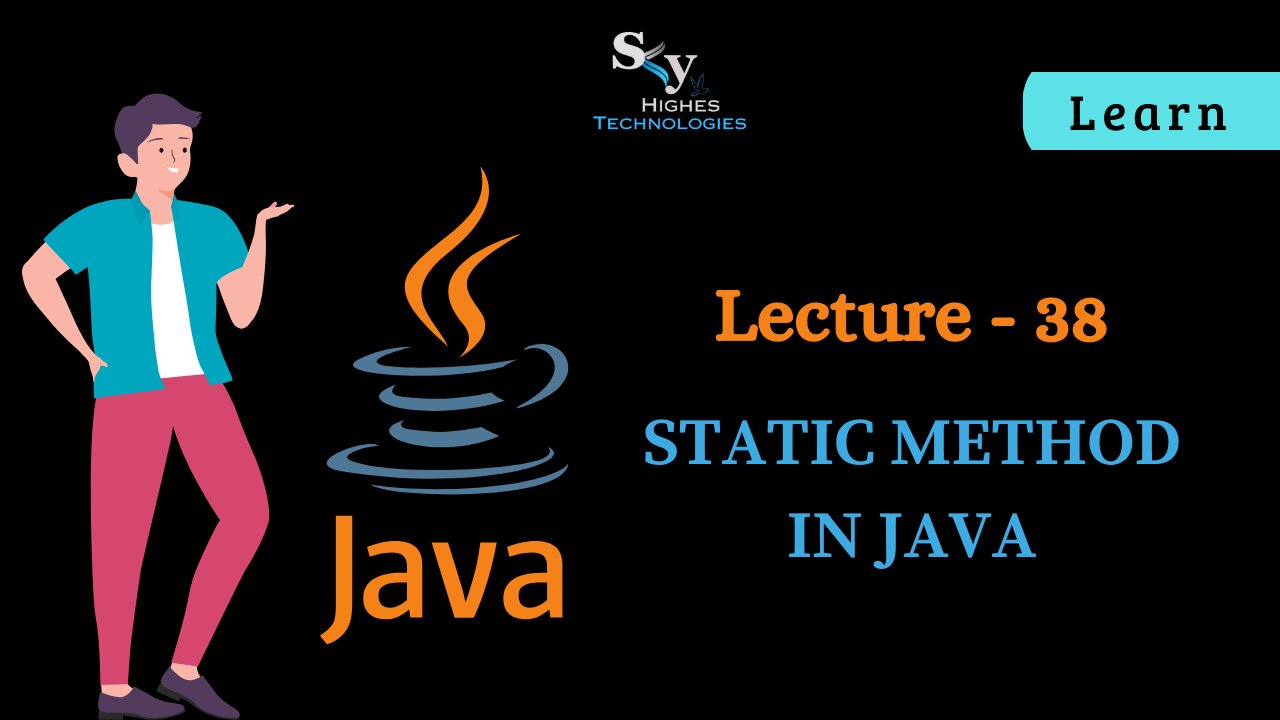Premium Only Content

#38 Static Method in JAVA | Skyhighes | Lecture 38
Here's a comprehensive explanation of static methods in Java:
What are static methods?
Class methods: They belong to the class itself, rather than individual objects of the class.
Called without object creation: You can invoke them directly using the class name (e.g., ClassName.staticMethod()).
Declared with static keyword: Use the static keyword to create a static method within a class.
Key characteristics:
Access to static members: Can only access static variables and call other static methods within the class.
No access to this keyword: Cannot use the this keyword to refer to the current object, as they don't operate on specific objects.
Memory allocation: Not allocated memory on the heap for each object, as they are associated with the class itself.
Example:
Java
class MathUtils {
public static double calculateArea(double radius) {
return Math.PI * radius * radius;
}
}
// Usage:
double circleArea = MathUtils.calculateArea(5.0);
Use code with caution. Learn more
Common uses:
Utility functions: Creating general-purpose functions that don't require object-specific data (e.g., mathematical calculations, string manipulations).
Factory methods: Creating objects without exposing the constructor, offering flexibility in object creation logic (e.g., Collections.emptyList()).
Singleton patterns: Ensuring only one instance of a class exists by making the constructor private and providing a static accessor method.
Accessing static variables: Manipulating static variables directly without object instantiation.
Best practices:
Use static methods for operations that don't require object state, enhancing code readability and maintainability.
Avoid using static methods excessively, as they can hinder testability and modularity.
Consider using dependency injection or other design patterns for object creation and interactions when appropriate.
Be mindful of thread safety when using static methods in multithreaded environments.
-
 35:54
35:54
The Mel K Show
5 hours agoMel K & Tim James | Healing is an Inside Job | 9-14-25
36.2K3 -
 3:06:33
3:06:33
IsaiahLCarter
8 hours ago $2.20 earnedCharlie Kirk, American Martyr (with Mikale Olson) || APOSTATE RADIO 028
47.9K2 -
 16:43
16:43
Mrgunsngear
12 hours ago $2.24 earnedKimber 2K11 Pro Review 🇺🇸
27.8K12 -
 13:40
13:40
Michael Button
1 day ago $0.24 earnedThe Strangest Theory of Human Evolution
28.3K17 -
 10:19
10:19
Blackstone Griddles
1 day agoMahi-Mahi Fish Tacos on the Blackstone Griddle
20K3 -
 23:51
23:51
Jasmin Laine
1 day ago“Stop Wasting My Time!”—Trump's BRUTAL WARNING To Canada As Poilievre ROASTS CBC LIVE
15.7K28 -
 9:54
9:54
Millionaire Mentor
1 day agoNBC Host EXPOSES JB Pritzker For Saying This About Trump
9.68K9 -
 1:35:39
1:35:39
SB Mowing
2 days agoIt took the WHOLE NEIGHBORHOOD to uncover this yards SHOCKING SECRET
94.2K63 -
 12:52
12:52
ROSE UNPLUGGED
1 day agoFrom Vision to Legacy: Charlie Kirk
59.4K26 -
 1:14:22
1:14:22
Jeff Ahern
9 hours ago $1.21 earnedThe Sunday Show with Jeff Ahern
85.2K39